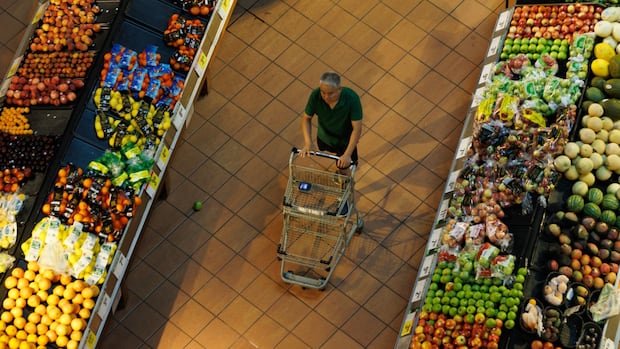Inflation cooled in July, thanks largely to relief at the gas pumps, but Statistics Canada said grocery and shelter costs were accelerating last month.
The annual rate of inflation fell to 1.7 per cent in July, the agency said Tuesday, down from 1.9 per cent in June and just slightly below what economists were forecasting.
Costs rose 3.4 per cent annually at grocery stores, up from 2.8 per cent in June. Confectionery and coffee products saw big price jumps in July, which Statscan said were tied to tough growing conditions in countries that produce cocoa and coffee beans.
Prices for fresh grapes, meanwhile, were up nearly 30 per cent, driving the overall cost for fresh fruit up 3.9 per cent in July from 2.1 per cent in June.
The agency also says prices for gasoline were down 16.1 per cent year-over-year, thanks largely to the removal of the consumer carbon price.
Gas prices were also down 0.7 per cent on a monthly basis following an increase in production from oil-exporting countries and a ceasefire in the conflict between Israel and Iran.
Shelter inflation sped up to three per cent last month from 2.9 per cent in June, marking the first increase in that category since February 2024.
Rent price growth picked up in July, particularly in Prince Edward Island, Newfoundland and Labrador and British Columbia. Lower mortgage costs are still moderating the overall increase in shelter inflation.
Prices for natural gas, meanwhile, fell to a lesser degree than in June, thanks mostly to higher costs in Ontario.
The Bank of Canada will be parsing the inflation figures as it prepares for its next interest rate decision on Sept. 17.
The central bank held its policy rate steady at 2.75 per cent at the end of July.
BMO chief economist Doug Porter predicted in a note to clients on Tuesday that there weren’t enough signs of easing in the price data to convince the Bank of Canada to cut interest rates next month.
“There were no big surprises in the July inflation report, but we probably need a downside surprise at this point to prompt the BoC off the sidelines,” he said.
Statscan said the central bank’s preferred measures of core inflation, which tend to strip out more volatile price changes, held steady around three per cent in July.
But Porter points out that the three-month core inflation readings now show an annualized rate of 2.4 per cent for July. And if that more recent trend in core inflation is maintained and the economy remains soft, “that will eventually set the stage for BoC cuts,” Porter said.

